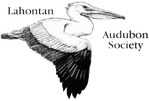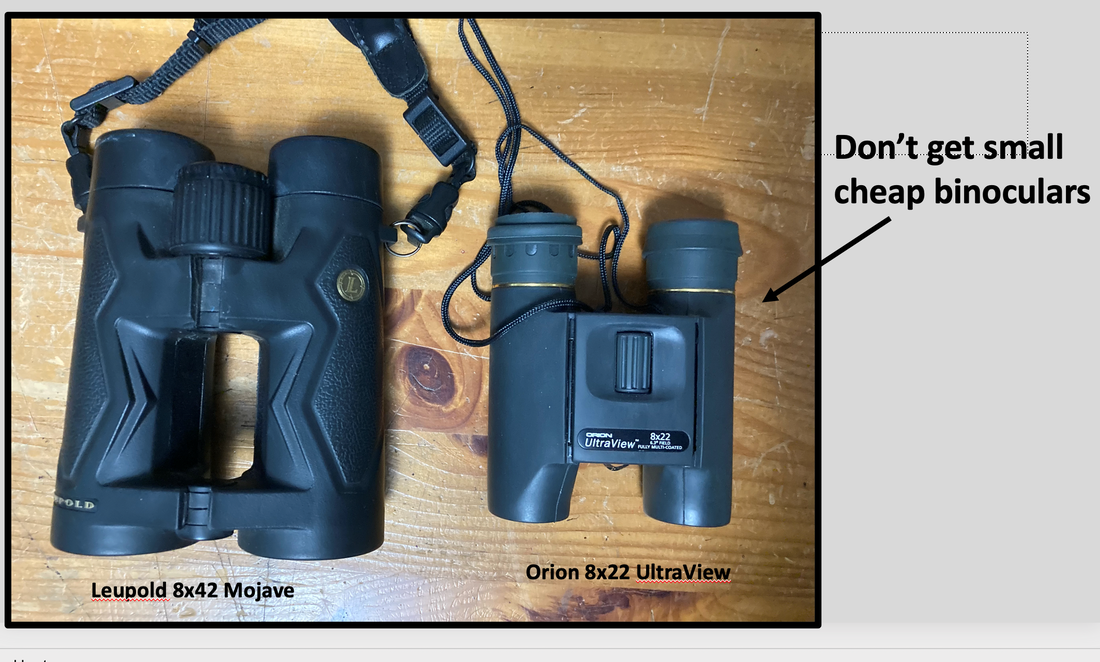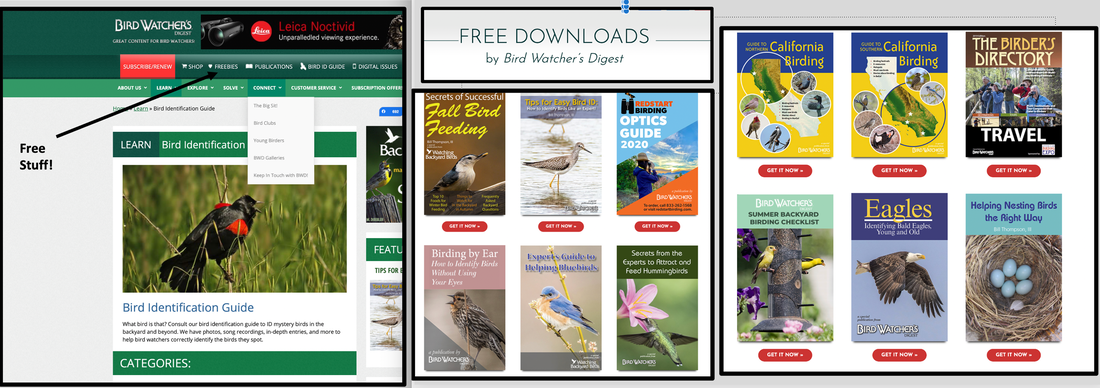|
You’ve seen those little yellow birds flitting around your yard. And you’ve watched Robin red-breast (or probably more correctly, “Robin orange-breast”) running across your lawn. And then there’s that “blue jay” that sometimes visits. You’ve enjoyed your yard birds so much that now you’re wondering if you might enjoy watching other birds outside your yard. But are you wondering how to go about it? Then stay tuned – here are some suggestions for “getting your feet wet,” (or probably more correctly, getting your eyes tuned) so you can expand your bird-watching horizons. To move from the level of your yard to the level of a bird-watcher (or “birder” as we call ourselves) these are the two most important tools: 1. Good Binoculars; 2. A good Bird Guide. Good BinocularsObviously you can watch birds with just your eyes (and maybe you’ve been doing that in your yard) but a good pair of binoculars will allow you to see the birds up closer and notice more details than you can with just your naked eye. (Figure 1). But when it comes to optics, keep this in mind: You get what you pay for. The more money you’re willing to spend, the better the binoculars. Don’t use those old opera glasses your Aunt Matilda gave you, or those cheap $20 or $100 binoculars you found on Amazon (Figure 2). You will be sorely disappointed. Be willing to spend more money. Remember, you’re going to use these binoculars for a long time, so don’t be a penny-pincher. If you’re really passionate about birdwatching, you can spend as much as $2000 or $3000 for top-level binocs. But you don’t have to. These days several brands of binoculars in the $200 to $400 range are just as good, if not better, as the more expensive ones that were available 10 to 20 years ago. So, bite the bullet, figure out how much you can afford to spend, and then do it. You will never regret buying a good, middle-priced (or even expensive) pair of binoculars. As a start, you might check out some of these best-selling models available at Redstart Birding: Vortex Diamondback HD 8x42 -- $219.99 Opticron 8x32 Discovery WP PC -- $229.00 Zeiss 8x25 Terra ED -- $349.99 Kowa BD II XD 8x42 -- $449.00
I might suggest that you go to redstartbirding.com and download their 2021 Optics Guide. Not only does it list many brands and models of binoculars (with far more information about each than you need), it also has several articles with helpful hints about what to look for when buying binoculars. And what should you look for? Well, magnification for one, and the amount of light the binoculars let in for another. Weight is also a factor. The lenses that you put up to your eyes (the ones at the top of the binocs) are called the oculars, or eyepieces (Figure 4). They do the magnifying. The other lenses, the ones at the bottom of the binocs, are called the objectives. They determine the amount of light coming into the binocs. You usually see binoculars described as 7x35; or 8x42; or 10x50 or something similar. The first number (the 7 or 8 or 10) is the magnification. A 7x binocular will make the bird look 7 times bigger than it is (or, 7 times closer to you than it really is), while 8x and 10x will make the bird look even bigger. The second number, the 35, or 42 or 50, is the diameter of the objectives measured in millimeters (mm). Usually the bigger the diameter of the objectives, the more light that will enter the binocs and thus the brighter the image (but not always). So, you might think it obvious that you should get binoculars with the biggest magnification and biggest objectives, right? Well, not necessarily. There’s a tradeoff to consider. The bigger the binoculars, the heavier they are, and thus harder to hold them steady, especially on a windy and/or cold day (I know, because I have 10x50’s). So for beginning birders, bigger is not always better. A 7x35 or an 8x42 would be easier to hold than a 10x50, and easier to hang around your neck if you’re birding all day (because they’re lighter). So, I recommend you start with one of the lighter models – an 8x42 is a good compromise. Good Bird Guide
A regional guide will save you a lot of page-turning when trying to identify a bird. For example, there are 56 species of Wood Warblers shown over 34 pages in the National Geographic Guide to Birds of North America, but only 41 species on 22 pages in the regional Guide to Birds of Western North America (and only about 11 of them regularly occur in northwestern Nevada). So, get a copy of both. Use the regional guide to learn the birds here in Reno and surrounding areas, and save the continental guide for that future trip to northern Ohio, or Cape May, New Jersey, or Annabel Island, Florida, or some other eastern or central birding hot spot. Whichever guides you get, don’t skip all that introductory material in the front of the book. It contains valuable information to help you become a good birder. Turn to the diagrams of the parts of a bird and learn what we call the “topography” of a bird (not necessarily all at once, but a bit at a time). This will help you understand the descriptions of birds when you encounter terms like eyeline; scapulars; rump; crissum; and so on. And study the range maps. They can tell you when to expect a certain bird in our area, and even if that bird occurs here at all. Additional Resources
Well, if you’re still eager for tips and tricks for becoming a birder, check out this website for valuable information: Birdwatcher’s Digest. Notice all the free information you can download (Figure 8) and additional information on how to choose binoculars, how to identify a bird, and much more (Figure 9). Probably the best birding website is Cornell Laboratory of Ornithology’s website called All About Birds (allaboutbirds.org). You can enter a bird’s name in the Search box (upper right corner), click on it, and you will get so much more information about the bird than you bargained for! But notice, too, all the information you can get for improving your bird ID skills (Figure 10). So, welcome to the crowd! Glad to have you as a fellow birdwatcher. And one last tip for getting better at birding: join other birders on a group field trip. Birding with other, more experienced birders is a great way to learn how to identify birds. Go to our LAS website (www.nevadaaudubon.org) and scroll down to the Upcoming Events Calendar. Click on any of the Field Trips located on the Calendar and register for any that you can attend. All our field trips are free and led by experienced birders eager to share their knowledge. It’s a great way to learn, and a great way to meet new birding friends. Hope to see you on some future trip! Written by Alan Gubanich |
topics
All
Archives
July 2024
|












 RSS Feed
RSS Feed